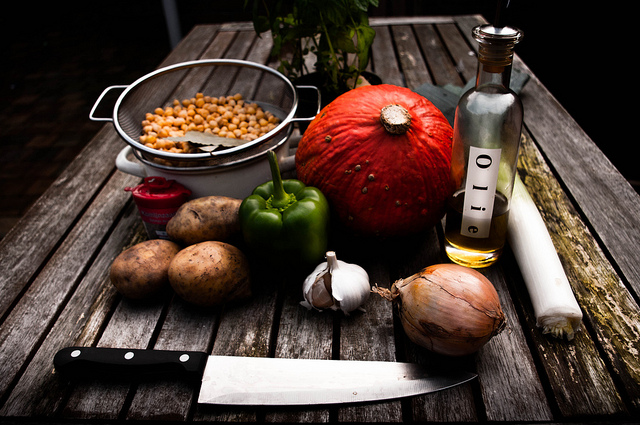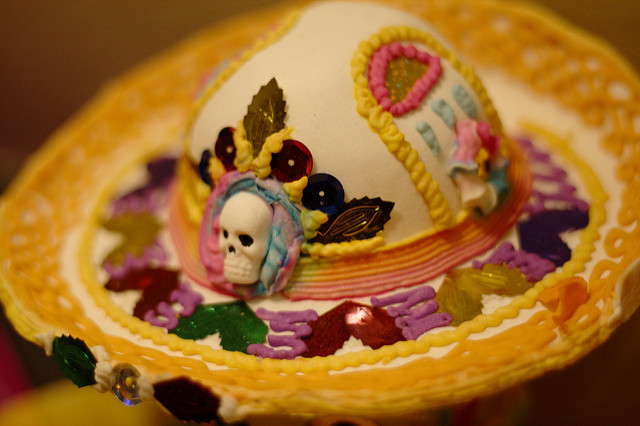Travel


Photos by Esparta, Enric Martinez & Keith M Avery via Flickr Creative Commons
- Ikebukuro Autumn Festival, Tokyo: A Photo Essay
Before going to Japan, our friend +Lili Florea (aka Muza-Chan) recommended us to attend at least one matsuri. Given our fondness for festivals and all things traditional, we thought it would be an amazing idea, but at the same time we weren't...
- The Ascot Festival Of Food And Wine
When most people think of Ascot, they think of the glamour and excitement of horse racing. There's no denying this is a huge draw: every year hundreds of thousands of racing fans make their way to Ascot's race days. For many, though, racing isn't...
- Las Fallas Festival, Valencia: Mascleta
Las Fallas or the Festival of Fire is held in Valencia, Spain every year from the 1st to the 19th of March. People hit the streets dressed up in traditional costumes, build a huge statue of Virgin Mary out of flowers and enormous fallas...
- Villagarcía De Arousa Water Festival
Villagarcía de Arousa Water FestivalSpain, the land known for its incredible landscapes, tantalising tapas and most recently home to the world cup trophy, offers lesser known delight with a fascinating yearly festival taking place in the village of...
- Best European Festivals In August
La Tomatina, Buñol Photo by agsaran via Flickr European festivals can be buried in tradition or quite young (Sziget Festival was first held in 1993). However they are lots of fun and a great way to find out more about the locals...
Travel
5 Ghost Festivals Around the World
The night is dark and full of terrors – or so it has been said, and in almost every culture there is a belief in a day when the veil between the worlds thins, allowing the dead to walk. You’d think this would be the epitome of a dark night being full of terrors, but it’s actually not. In fact, the day of the dead festivals are usually very happy occasions.
Most of these fiestas coincide with the harvest festival that marks the end of autumn and beginning of winter – generally the end of October up until November, with celebrations lasting, on average, for three days. Cultures which have been recorded for celebrating a day of the dead include ancient Persians, Egyptians, Peruvians, and Romans, as well as most of northern Europe, Japan, the Pacific Islands, and the Tonga Islands.


Dia de los muertos / Day of the Dead
This incredible festival is a modern blend of ancient Aztec and Mayan beliefs, with Catholic ones that the Spanish brought over. In the past, the Aztecs held a two-month long festival which was presided over by Mictecacihuatl (Lady of the Dead). Present day sees the festival shortened to a two-day event, as it was merged with the Catholic All Saints Day (1st November) and the All Souls Day (2nd November); also known as Dia de los Inocentes (1st November) and Dia de los muertos (2nd November). Alters decorated with flowers, foods, toys, sweets, and washing utensils are carefully laid out for the spirits. Brightly coloured items, skeletons, and masks are worn as they are a predominant symbol of this festival, and sugar skulls are given as gifts.
Obon / Bon
Obon is a three-day Japanese festival in which ancestors who have passed on are honoured and remembered fondly. As the dead will be returning, it’s quite an important tradition for families to gather and clean their household shrines and family graveyards; they lay fresh flowers and sweets down, and put up decorations. The bon odori dance is performed on the 13th, to welcome the spirits, and on the 16th to bid them farewell. On the final day, delicate toro nagashi (paper lanterns) are lit and sent off downstream, to guide the spirits back to the underworld. Obon is also celebrated in parts of South America such as Sao Paulo, due to the large Japanese population that lives there; it is also celebrated in Hawaii, and Bon dances are performed by numerous nationalities who have adopted the festival.

Samhain / All Hallows Eve
Samhain is a Celtic festival to commemorate those who’ve passed on. Later, it was called All Hallows Eve and it spread across to America. You’ll recognise the name likely, as it’s what our modern Halloween celebrations are based on. The tradition of dressing up in costumes or cross-dressing was common around this time, to trick evil spirits so they couldn’t follow the living. Sweets and foods were set out for friendly spirits to consume, and often a dinner for the dead was held where recently deceased relatives had a place laid at the dinner table. People were often employed to guard crossroads during this time, to prevent any ghosts from staying behind or becoming confused and trapped on earth. In ancient times, druids and witches used this time to scry (see into the future), and many bonfires were documented as being seen on hills - on this night more than any other.
Bon Kan Ben / P’chum Ben, Cambodia
Translated to Ancestor’s day, this 15-day festival is held during the 10th month of the Khmer calendar. Bon Kan Ben are the days leading up to the final festival day, P’chum Ben. The night before the festival, monks stay up all night to chant prayers, as the gates of hell are believed to open and ancestors up to 7 generations back can return. Families will go to several different pagodas over the period, and offer gifts of food to monks; it is believed this gains the family spiritual merit which eases their ancestors suffering. Monks will also pray with families to ensure that their message is heard. Money and flowers are left in the temple as this is also a day of generosity for the poor. In each pagoda is a long table with bowls for the offerings, and at one end of each table is a bowl reserved for spirits whose entire family is deceased; a handful of rice is placed in this by families so that they are not forgotten. Ancestral ghosts are said to bestow happiness on those who have given them gifts and prayers.

Yu Lan / Ghost festival
Also known as Hungry Ghosts Day, Yu Lan is celebrated in Chinese culture, on the 15th day of the 7th lunar month – with the 7th lunar month regarded as “ghost month”. On the night of the 15th, the gates of hell are opened, and spirits of those who were not given a proper tribute at death may return. Live shows are held for the population, though the first row of seats are cordoned off for the dead to use, and Buddhists and Taoists spend this day performing rituals to take away the pain and suffering of the deceased. Families burn incense and joss paper (gold paper /spirit money / paper crafts like houses) to appease the spirits, and tables of food with incense and flowers are also set out for wandering spirits. On the final day of the festival, paper boats are lit and set on bodies of water, to guide the ghosts back to the underworld, and when the flames go out, the spirit attached is believed to have crossed over.
Photos by Esparta, Enric Martinez & Keith M Avery via Flickr Creative Commons
- Ikebukuro Autumn Festival, Tokyo: A Photo Essay
Before going to Japan, our friend +Lili Florea (aka Muza-Chan) recommended us to attend at least one matsuri. Given our fondness for festivals and all things traditional, we thought it would be an amazing idea, but at the same time we weren't...
- The Ascot Festival Of Food And Wine
When most people think of Ascot, they think of the glamour and excitement of horse racing. There's no denying this is a huge draw: every year hundreds of thousands of racing fans make their way to Ascot's race days. For many, though, racing isn't...
- Las Fallas Festival, Valencia: Mascleta
Las Fallas or the Festival of Fire is held in Valencia, Spain every year from the 1st to the 19th of March. People hit the streets dressed up in traditional costumes, build a huge statue of Virgin Mary out of flowers and enormous fallas...
- Villagarcía De Arousa Water Festival
Villagarcía de Arousa Water FestivalSpain, the land known for its incredible landscapes, tantalising tapas and most recently home to the world cup trophy, offers lesser known delight with a fascinating yearly festival taking place in the village of...
- Best European Festivals In August
La Tomatina, Buñol Photo by agsaran via Flickr European festivals can be buried in tradition or quite young (Sziget Festival was first held in 1993). However they are lots of fun and a great way to find out more about the locals...
